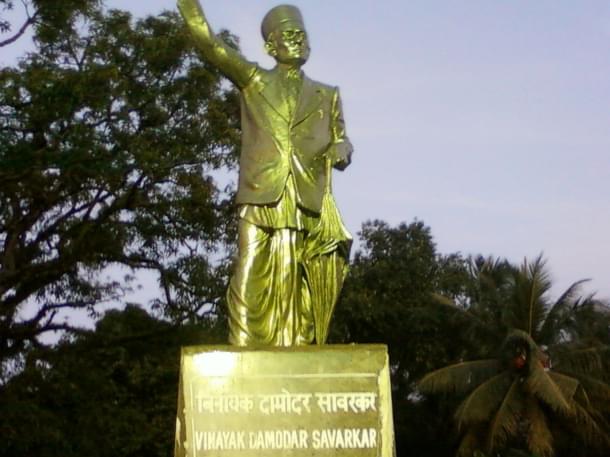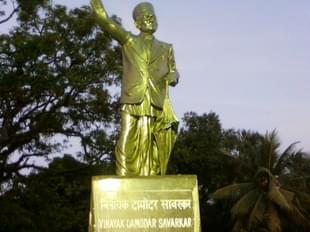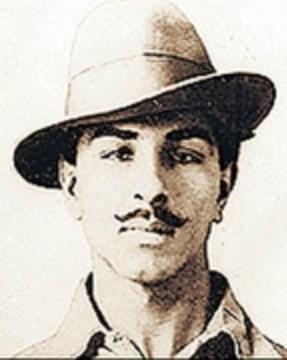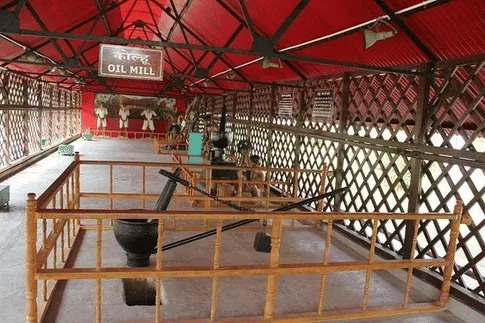Politics
Did Veer Savarkar Really Commit Treachery?
Omkar Patil
Apr 06, 2016, 04:45 PM | Updated 04:45 PM IST
Save & read from anywhere!
Bookmark stories for easy access on any device or the Swarajya app.


The Indian National Congress recently labelled Veer Savarkar a traitor and Bhagat Singh a martyr due to the political vendetta against an ideology represented by Savarkar. Savarkar coined and defined the term Hindutva, followed by many Hindu nationalist organisations like the Rashtriya Swayamsevak Sangh (RSS).

Congress has called Veer Savarkar a traitor because he wrote clemency petitions while imprisoned in the Andamans. Petitions were the only way of making any sort of request at the Andaman Jail. And Savarkar, had no intentions of suffering in jail.
Savarkar believed that it is the primary duty of every revolutionary to free himself from the British stranglehold in order to return to the freedom struggle. He often expressed this opinion before fellow revolutionaries imprisoned in the Andamans.
How does suffering in jail contribute to the freedom struggle?
It has no practical, major consequence apart from gaining sympathies from few countrymen or inspiring few patriots. Admittedly, the prison administration took care of the condition of prisoners in jail by keeping it a secret. As Savarkar writes in My Transportation for Life:
A prisoner in the Andamans was permitted to write only one letter home during the year. The letter had, perforce, to be as brief as possible. Again, it was to be an open letter, to be censored first by the jailor, next by the Colonial Officer, and to be despatched if approved by them. Every prisoner was warned that the letter shall not be forwarded if it breathed a single word against the jail authorities. Thus only a slip of a letter could be sent by him home once every year. Even this small facility was taken away from him for the year if he was guilty of the slightest offence like talking to a fellow-prisoner, committing nuisance outside the stated hours, not sitting in a line, so on and so forth. One can imagine how difficult it was to be free from any trivial offence of the kind we have mentioned, during the course of three hundred and sixty-five days. It was impossible, therefore for any prisoner in the Andamans to convey any news about him to the outside world. It need not be said that it was also impossible for the outside world to send any news to him. The prisoner, in these circumstances, could not write even two lines, every year without fail, to inform his people at home that he was alive.
A lot of people died due to the harsh conditions of the Andamans. Did their death contribute to the freedom struggle? No. Prisoners in Andaman were subjected to torture. Torture is much more painful than death. Torture is the worst punishment of all.
Savarkar was the only person sentenced with transportation for life in the Andamans twice which meant a total of 50 years. Given the harsh conditions in jail, it was impossible to live there for 50 more years.
Savarkar
did not ask for complete release in the clemency petitions. He had
actually asked for what his legal rights were. It should be noted that
Savarkar was not supposed to be kept in a prison ‘cell’ for 50
years. It is believed that after three years the prisoners were sent
outside the prison; but within the Andamans to work and later to settle,
even bringing their families from mainland India.
Look at the part of Savarkar’s petition below to show what he actually asked:
Either please send me to Indian jail for there I would earn(a) remission;(b) would have a visit from my people come every four months for those who had unfortunately been in jail know what a blessing it is to have a sight of one’s nearest and dearest every now and then!(c) and above all a moral - though not a legal - right of being entitled to release in 14 years;(d) also more letters and other little advantages.Orif I cannot be sent to India I should be released and sent outside with a hope, like any other convicts, to visits after 5 years, getting my ticket leave and calling over my family here. If this is granted then only one grievance remains and that is that I should be held responsible only for my own faults and not of others.
Even the legal rights which were allotted to prisoners by the British
government, were denied specifically to Savarkar because Savarkar was
considered more dangerous than other prisoners. Even his badge in the
Andaman Cell had the ‘D’ (D for dangerous) symbol. He was often blamed
for someone else’s mistakes and punished unfairly.
When World War I broke out, Savarkar sent a petition to the Government of India in 1914. He averred that were the British to grant colonial self-government to Hindustan and a majority in the Central Legislative Council, revolutionaries would help Britain in the War. He gave instances of European Governments setting their political prisoners free and even those of the liberation of political prisoners in Ireland to prove his point.
In this context, he writes in My Transportation for Life:
Let them release us to convince the people that England was willing to break the chains that had held India in thrall. We pledged our word of honour that we would exert our utmost to bring recruits to the Indian army in large numbers that would equip her to stave off the invasion of India from the North by the forces of Afghanistan and Turkey, and to march to any from that needed her presence to fight the foe and beat him. We would offer ourselves as volunteers to serve in that army in defence of India and for the victory of England. Release us, I said, equip India with colonial self-government, and win the loyalty and love of her people. That would assure to Government all the co-operation that it needed from the people in the present crisis. Let it not miss that splendid opportunity. In case the Government suspected, I wrote in conclusion, my motive in writing the letter, I offered to do without any release for myself personally. Let them release all the political prisoners in the country leaving me alone in my own cell in the Andamans. I shall rejoice in their freedom as if it was my own. The Government was right in suspecting me; perhaps, when free, I might lead an agitation to break the peace in India. I had not written the letter to seek my own liberation, or to compel them to set me free along with other political prisoners involved in similar or the same political conspiracies. Hence I had made the proposal to keep me back and set all others free.
This clearly means that his proposal was selfless and he was more
interested in getting other political prisoners free. He further said-
The Superintendent agreed to forward the letter and I wrote in it as follows: I Wrote that I felt it my duty, as intimately connected with the revolutionary movement in India, to inform the Government, in its distracted state of mind, what I thought about the present situation in India vis-a-vis the war between England and Germany. It was our ideal, I Wrote, to win independence for India, and it remained our ideal even that day. But we were not sworn to violent means alone to achieve that independence. If any other sure means were available to us before for that purpose, we would not have gone in at all for terrorist and revolutionary methods.
It is important to note that Savarkar wrote My Transportation for Life while he was still under house imprisonment from 1925-26.
His prison life

The jail conditions were so harsh that many prisoners used to commit suicide. Some prisoners used to beg doctors to inject them with diseases, so that they could avoid the harsh work. Some prisoners went mad due to torturous conditions.
Indu Bhushan Roy was one such freedom fighter who committed suicide by tearing his clothes into three parts and then hanging himself from the bars of the cell ventilator. Ullaskar Dutt went mad due to harsh prison conditions and used to suffer from hallucinations.
Great revolutionary Bhai Parmanand, who was also lodged in Andaman, while writing about strike in 1919 said-
For any conflict arising in prison, Jailor Barry and Superintendent used to hold Savarkar brothers responsible.
It is also important to note that many of the jailers in the Andamans were fanatic Muslims who used to persecute Hindu prisoners and convert them forcefully. Some prisoners converted to Islam as a result. Savarkar survived all these attempts. He started a re-conversion campaign to re-convert all those prisoners who were forcefully converted to Islam.
As a result, few Muslim zealots attempted to murder him, but he survived all those attempts. Veer Savarkar’s brother, Babarao Savarkar had discovered an attempt to poison Veer Savarkar’s food and thus he saved him.
It is clear now that the clemency petitions were a strategic move.
When the enemy has his control over you, he has the upper hand. In such case, it is better to think with brain instead of thinking with the heart. A wise man never lets his ego prevail over his brain.
Shivaji too had sent similar letters and petitions to deceive the enemy as before the killing of Afzal Khan, during Siddi Johar’s siege and during his imprisonment at Agra. He had also accepted some humiliating conditions during the treaty made at the time of the siege of Purandar fort. However, Shivaji bid his time and avenged all insults when he became powerful enough. This is a clever political stratagem.
Communists also call Savarkar a coward. But what did their prophets Lenin & Stalin do? As Savarkar’s biographer J.D Joglekar says:
Did not Lenin accept the offer of ‘Sealed Car’ from the Kaiser’s German Government- a capitalist government? He came in that train to lead the Bolshevik Party and to seize power in Russia. Stalin made a pact with Hitler, his arch enemy. But what is laudable in Lenin and Stalin becomes condemnable in Savarkar. To a jaundiced eye everything looks yellow.
Reading My Transportation for Life tells you that Savarkar believed ‘living for the nation’ is better than ‘dying for the nation’. Dying for the nation is good enough, but you cannot contribute anything to the nation once you are dead. Instead, if you manage to survive, you still have the chances to fight for the nation.
Savarkar convinced many inmates to follow the same policy. Savarkar’s detractors will not tell you how many inmates Savarkar had saved. Savarkar gave hope to these people and prevented them from attempting suicide.Bhagat Singh’s comrade, Sachindranath Sanyal also followed Savarkar’s strategy.
Sanyal had received a life sentence for his complicity in the Lahore conspiracy and he secured his release through a declaration like that of Savarkar. Then he returned to his revolutionary activities and again received a life sentence as the mastermind behind the famous Kakori conspiracy.
In his autobiography Bandi Jeevan Sanyal says :
Savarkar had given the same assurance of co-operation in his application that for release, as I had given. Why was I released and his release denied...because the Government was apprehensive that if Savarkar was released, the revolution would flare up again in Maharashtra.
Had Bhagat Singh survived, he could have fought more. Bhagat Singh had secretly met Savarkar in the late 1920s seeking permission to publish the third edition of the 1857 War of Independence.
What Bhagat Singh thought about Savarkar’s Hindu nationalism is unclear. However, he has noted down a quote from Savarkar’s Hindu Pad Paadshahi in his jail notes :
‘Rather get killed than converted’ was the best that the Hindu could do. Ramadas rose and standing on the peaks of Sahyadri exclaimed: ‘No: not thus: ‘better get killed than converted’ is good enough: but it would be better so to strive as neither to get killed nor violently converted by killing the forces of violence itself. Get killed if that must be, but get killed while killing to conquer— conquer in the cause of Righteousness.’
To conclude : one may disagree with Savarkar’s political ideology, but at least one should respect his contribution to our freedom struggle. Disagreement with ideas is fine, but mud-slinging with usage of words like ‘traitor’ is highly objectionable.





